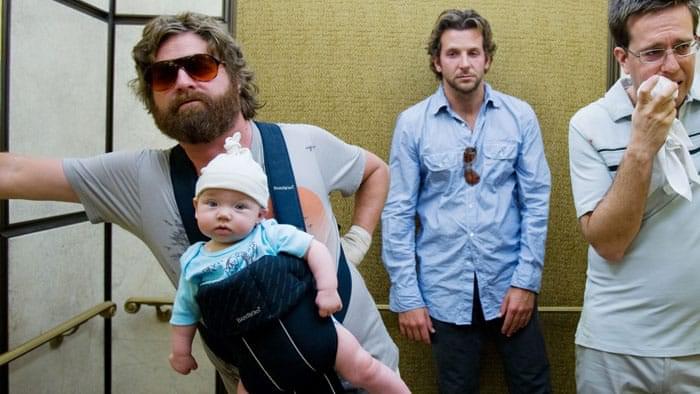
After recently attending a mini Jean-Luc Godard film festival in Santa Monica, I couldn’t help but see reflections of those visually dense, intellectually challenging films created 50 or 60 years ago in Tom Huckabee and Kent Smith’s film, Taking Tiger Mountain Revisited.
For openers, it was shot on black and white film stock, which helps establish its indie avant-garde cred. It’s a good look, even if the film itself doesn’t pack the artistic and intellectual heft of its avant-garde forebears. Think Cassavetes, Warhol and, if you really want to take a deep dive into the past, Luis Bunuel and Salvador Dali. Its premise is a bit like that of Godard’s Alphaville, a work of speculative fiction that takes place in a dystopian future. Like Alphaville, Taking Tiger Mountain Revisited (TTMR) envisions a bleak future where society is ruled by totalitarian governments and the average citizen lives under the state’s thumb. Godard’s film is by far the superior artistic achievement of the two, but one could speculate on how the recently released TTMR starring a young Bill Paxton (it was shot in 1983), may have been influenced by one of the more radical of the Gallic New Wave directors. Of course, after watching four feature-length Godard films on the big screen, Jean-Luc’s work might start bearing a stunning similarity to, say Smokey and the Bandit, if you really thought hard enough about it.

“Taking Tiger Mountain Revisited envisions a bleak future where society is ruled by totalitarian governments and the average citizen lives under the state’s thumb.”
As is the case with many an indie director’s passion projects, Paxton and Smith’s original version of TTMR had a tortured path to completion. They’d shot an hour of footage in Wales, and by some accounts, the result was languidly paced and incoherent. But ten years later, Huckabee massaged it into shape. He added a soundtrack — either none was recorded or it had been lost — shot new scenes and edited the ponderous footage from a decade previous, shaping it into a more coherent whole.
Both Alphaville and TTMR were shot in Europe — Paris and Wales, respectively — and take place in an undefined future. Each uses present-day architecture rather than futuristic sets, which makes sense — cities and small towns often look at least marginally the same as they did a century ago. And some modern architecture of the 1950s onward has a distinctly futuristic look about it, offering low budget productions, like Godard’s, the opportunity to get the desired look from Paris edifices that fit the bill. Besides, neither project had the budget to splurge on such luxuries.
One underlying principle in both films is a mistrust and dread of technology. 1960s counterculture saw technological as the enemy — governments could use it to spy on citizens, and armies could build deadlier weapons to conquer and enslave the world’s population. Or, at least that was a sampling of the more paranoid visions espoused in certain corners of society. And that paranoia comes through loud and clear in TTMR, albeit it with a feminist twist.

“Billy, it seems, isn’t so much a conscientious objector as the proverbial rat abandoning the sinking ship…”
In Huckabee and Smith’s version of the future, Europe is lorded over by a totalitarian patriarchy and each town has a single enterprise — a unified nation of company towns if you will. In Brendovery, Wales, it’s prostitution. A radical feminist clique is hell-bent on assassinating that town’s minister of prostitution, an older, doughy gent named Whitbread. Billy Hampton (Paxton) comes onto the scene unaware that he’s been programmed by the feminist terrorists to assassinate Whitbread. He’s planning a long weekend of whoopee in the brothels, but instead may be playing the lead role in The Manchurian Candidate II, so to speak.
Billy is an American expatriate and draft evader, and it’s hard not to equate this setup with Straw Dogs, Sam Peckinpah’s 1971 bloody opus about an American draft dodger (Dustin Hoffman) hiding out in England, who soon learns that despite his pacifist beliefs, violence will invariably track him down and knock on his door. TTMR doesn’t present a clear message, as does the Peckinpah film, which has more in common with a John Ford morality tale set in the old west. In fact, TTMR doesn’t present much of a moral at all. It’s more of an atmospheric take on life under dictatorial rule, with a touch psychedelia and hallucinatory visuals. Much like 1984, a continuous Orwellian stream of broadcasted government propaganda wheezes in the background. Among other topics, we hear details of the collapsed state of affairs in the United States, replete with food riots and martial law. Billy, it seems, isn’t so much a conscientious objector as the proverbial rat abandoning the sinking ship that is his homeland. And in the end, you may feel a little like the rodent left high and dry. We may not come away from it any the wiser about what all this means, but TTMR offers, if nothing else, a safe spot to observe a filmic version of civilization’s decline — and if the world’s going to rip apart at the seams, why not get a front row seat?

Taking Tiger Mountain Revisited (2018) Directed by Tom Huckabee, Kent Smith. Written by William S. Burroughs, Paul Cullum, Tom Huckabee, Kent Smith. Starring Bill Paxton, B.J. Turner, Bryan Massey, Sally Stevens, Loren Bivens, Chris Winfield, Judy Church, Margaret Nesbitt.
8 out of 10 Tickets to the Apocalypse


Dustin Hoffmann doesn’t play a draft dodger in Straw Dogs. He plays a professor. “After securing a research grant to study stellar structures, American applied mathematician David Sumner moves with his wife Amy to a house near her home village of Wakely on the Cornish moorland.”
When & where can this movie be seen ?
I miss my childhood friend & classmate (7th-10th grade) @ Aledo